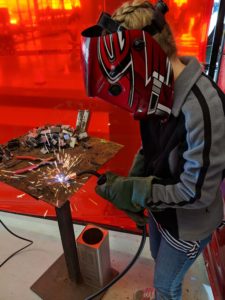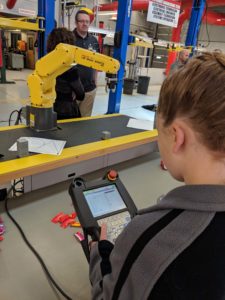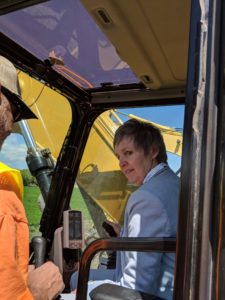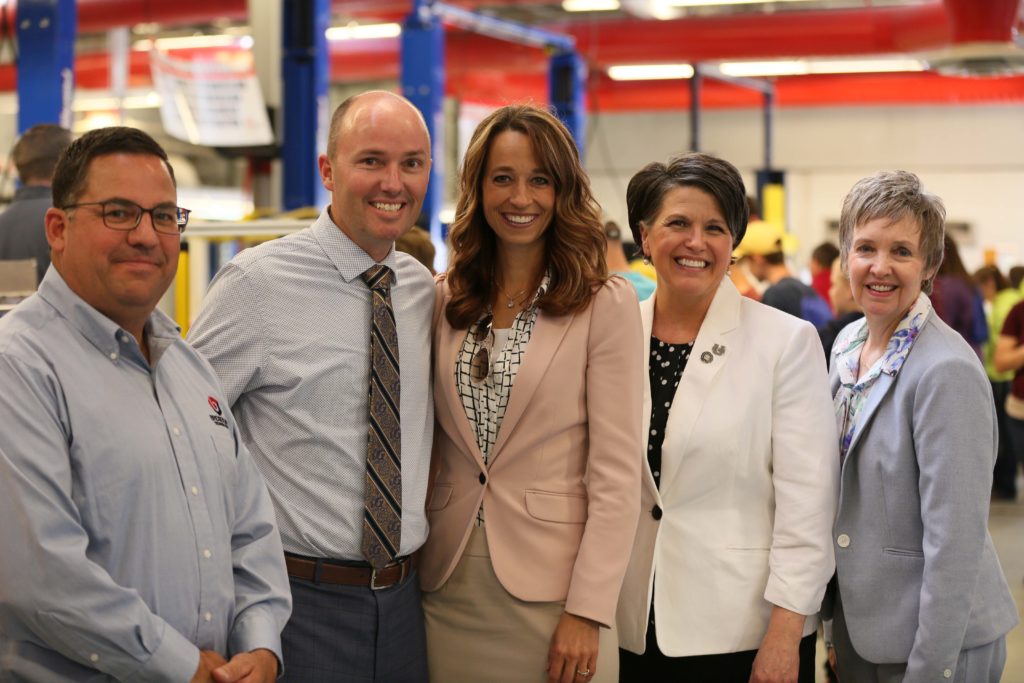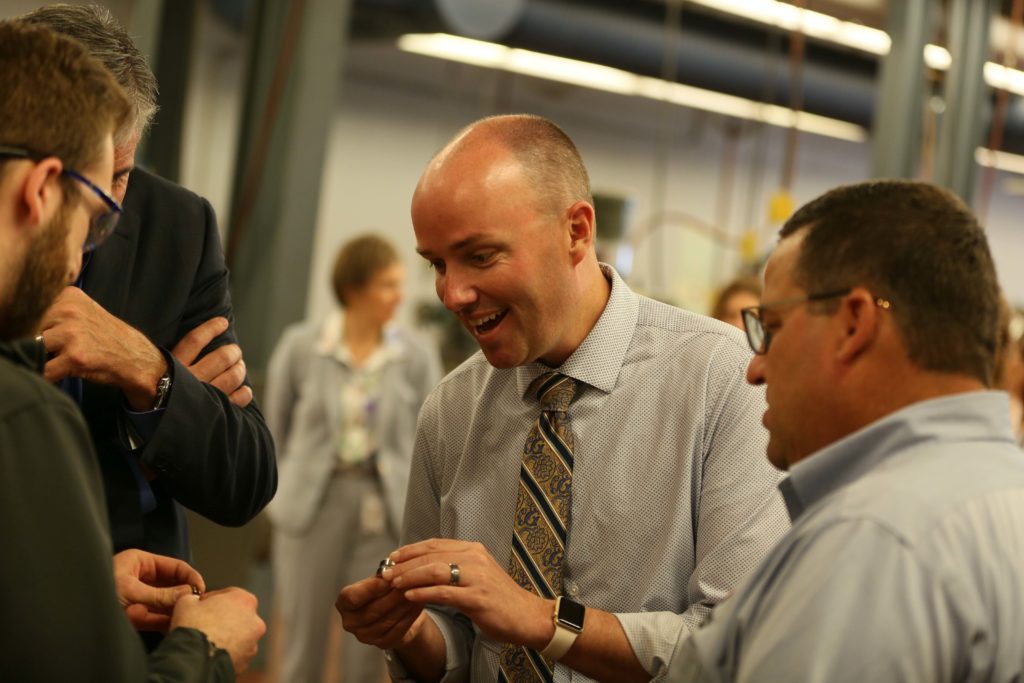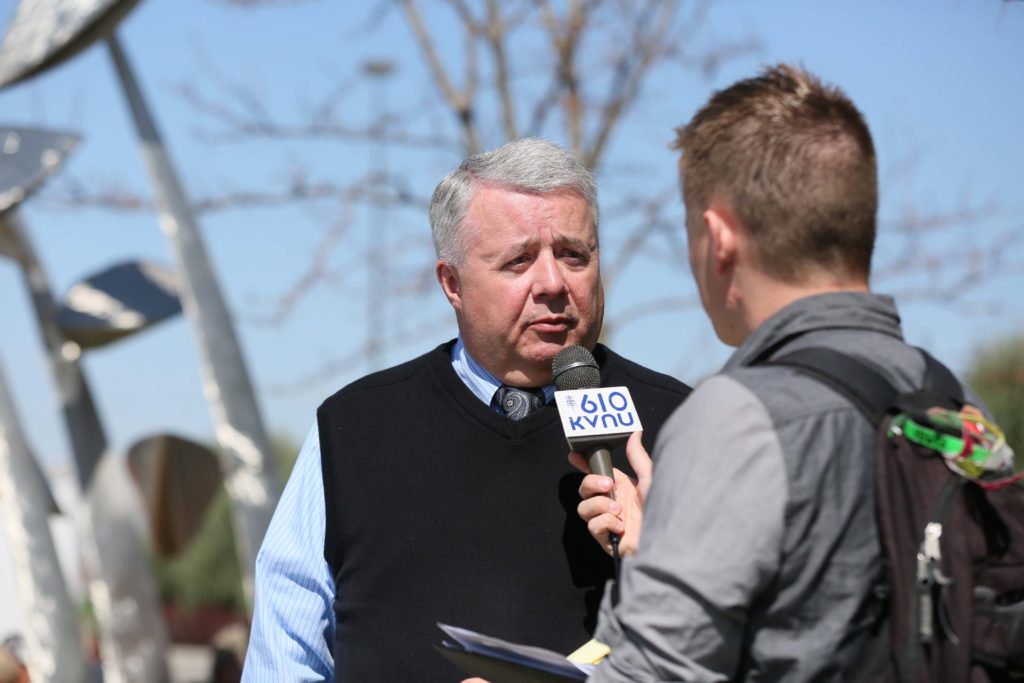Will Career and Technical Education Save the Economy?
Career and technical education has been around for decades. Historically, it was perceived as “grandpa’s vocational school,” meant for those who wouldn’t or couldn’t attend college after high school. Students were divided into two groups: vocational and non-vocational education paths, each with a specific endpoint. Vocational students would not attend college or earn a degree and would work in a trade job; non-vocational students would go straight to college, earn a degree, and start a career after college.
In recent years, a growing problem has been raising concern in Utah and the nation: by overlooking career and technical education as a viable option and presenting a university degree as the only way to have a career that pays well, we have cultivated a skills gap and jobs remain unfilled due to a shortage of qualified workers.
Bridgerland Technical College has been working to inspire students to pursue technical education and spark interest in the technology and trade industries. In today’s economy, most technology and trade jobs pay higher than average salaries, with some paying much higher. To help increase awareness, thousands of 7th-grade students are invited to Bridgerland Technical College each year to participate in Career Days.
Wendy Carter, Bridgerland Technical College’s Vice President for Instruction, described Career Days as a way to “Provide students an opportunity to experience a variety of career sectors through fun, hands-on activities. Unfortunately, there are thousands of technical careers going unfilled in our state. We hope to inspire students and these bite-sized activities do just that. The goal is to spark an interest that we hope will grow into a desire to pursue technical education and ultimately a career they will love.”
- Sparks fly as a student practices in the Welding Technology Program exhibit.
- Programming a robot at the Automated Manufacturing exhibit.
- Holly Daines, Logan City Mayor takes a turn as a heavy equipment operator.
The push to increase public awareness about the demand for trained workers and encourage students to consider career and technical education is growing. At the state level, Governor Herbert declared 2018 as the ‘Year of Technical Education,’ part of the Talent Ready Utah initiative, which will focus on making technical education programs more accessible to students, strengthening partnerships with industry, and creating stackable degree options that allow students to transfer seamlessly from high school to a technical college, then to university if they choose to pursue a degree.
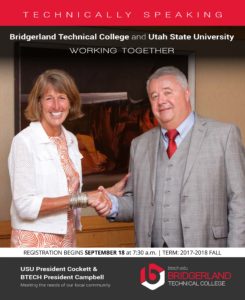
USU President, Noelle Cockett with BTECH President, Chad Campbell.
Bridgerland Technical College has partnered with high schools in the greater Bear River region and Utah State University to create a seamless path for students. High school juniors and seniors can dual-enroll at BTECH tuition-free. After high school, they can return to finish their certificates, with many students receiving scholarships to help pay their tuition and fees. After completing their program training, students can either enter the workforce directly or transfer their certificate to Utah State University for 30 credits toward an A.A.S. degree, then earn a Bachelor of Science.
Chad Campbell, President of Bridgerland Technical College, shared that Utah State University President, Noelle Cockett, has been instrumental in creating this opportunity for students through the Pathways partnership. Campbell is proud of the fact that together, they have created the first and currently the only stackable degree option in the state.
This year marked the 11th Annual Career Days, and several local and state dignitaries came to show their support, including Holly Daines, Logan City Mayor; Lt. Gov. Spencer Cox; Tami Pyfer, Education Adviser to Gov. Gary Herbert; Michael Mower, Deputy Chief of Staff to Gov. Herbert; Rep. Val Potter, R-North Logan; and Rep. R. Curt Webb, R-Logan. They took the opportunity to explore the hands-on activities, and talk to students and participating business partners.
- L to R: John Davidson, BTECH VP of Instruction; Lt. Gov. Spencer Cox; Abby Cox; Tami Pyfer, Education Adviser to Gov. Gary Herbert; Holly Daines, Logan City Mayor.
- Lt. Gov. Spencer Cox holding a coin students made on a CNC router in the Machining Technology Program exhibit.
- BTECH President, Chad Campbell, speaks to the press about the 11th Annual Career Days event.
“This is a fantastic event that provides students an opportunity to find an area of study that really excites them,” Pyfer said. “Our industry partners are clamoring for skilled workers in a variety of areas, and this demand is one of the reasons behind Gov. Herbert’s declaration that 2018 is the Year of Technical Education.” Pyfer also said that research shows students who receive career and technical education are more likely to graduate.
“Technical education has historically been seen as ‘different’ from a traditional college education,” Vice President of Instruction, Wendy Carter stated. “All across the nation that is changing, but I’m proud to say Utah is paving the way. The commitment of the State has never been stronger as was evidenced by the distinguished guests who came to support the message that technical education is important education. These are definitely exciting times.”

